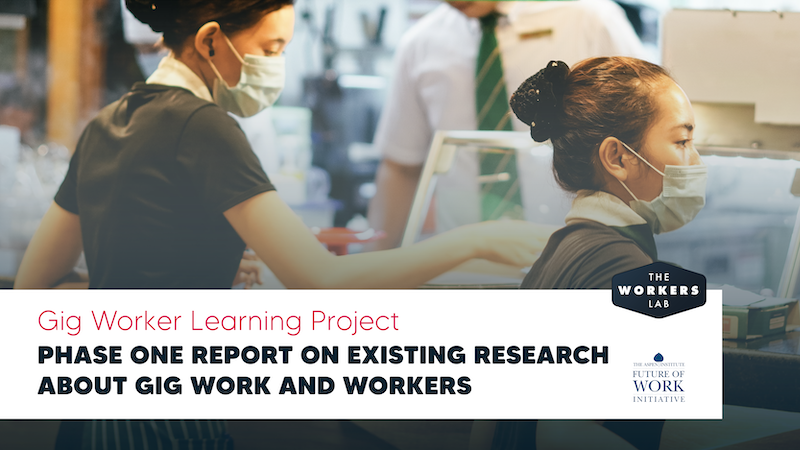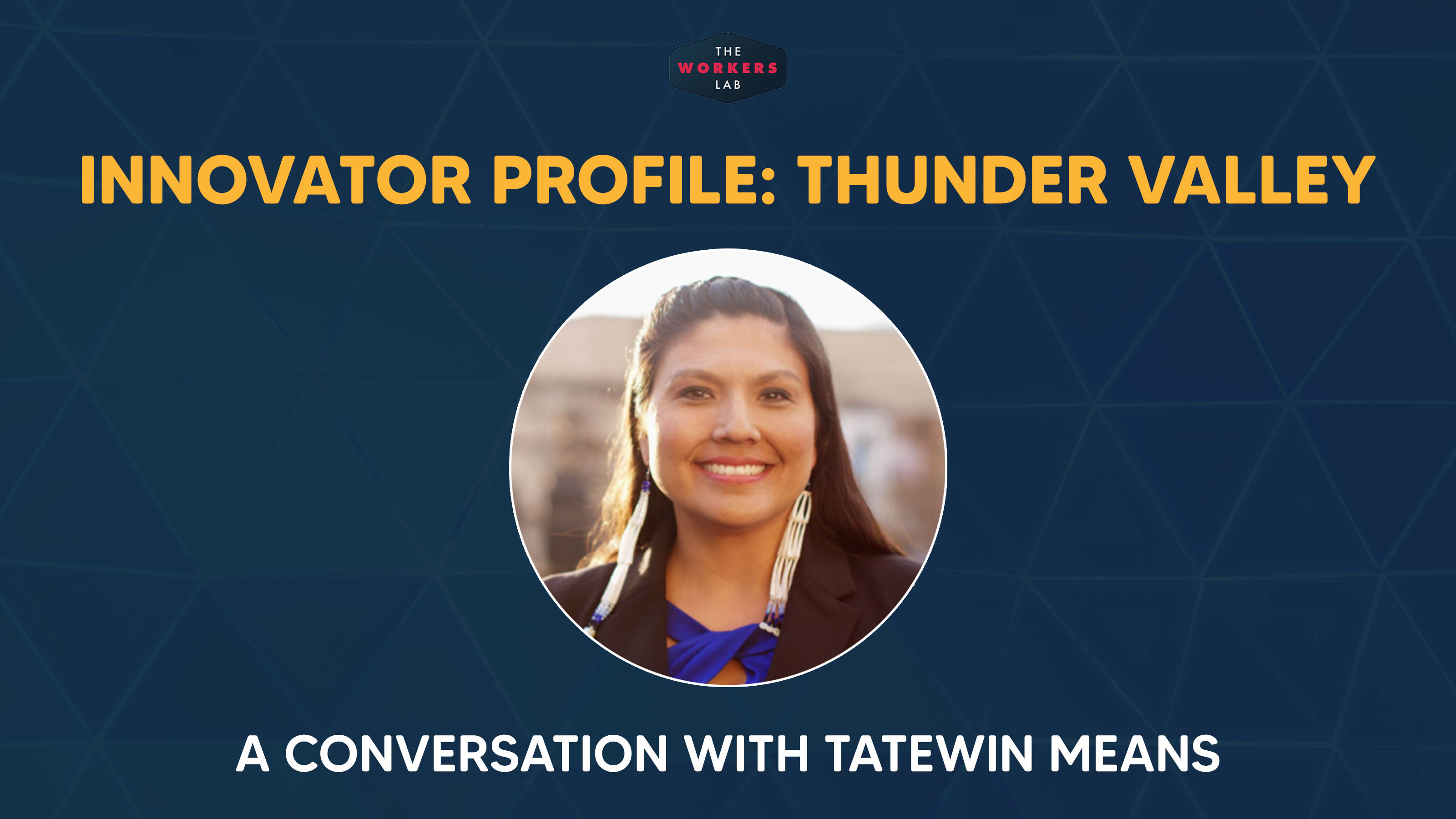Thunder Valley is a leader in workforce development for youth and implements their programs in ways that are attuned to Lakotan lifeways, re-matriating the land, and building a regenerative community.
It has been more than five years since The Workers Lab first invested in Thunder Valley Community Development Corporation, which used its $150,000 Innovation Fund grant to launch a Native-owned construction enterprise to help address a housing crisis on a Lakota Reservation. The organization started Thikaga Construction LLC, which was able to couple a need for additional housing with youth workforce development efforts. That work continues in earnest along with many other efforts, and we recently caught up with Tatewin Means, the organization’s Executive Director, to learn more about what Thunder Valley has been up to since we last checked in.
How has your organization changed or grown since the investment?
In one significant way, we’ve grown in the way we can now articulate the impact we want to make in our community. It’s making us super focused in all of our programming, interactions, and engagements; ensuring they are intentional and focus on impact.
One of our new focus areas has been on the tangible improvements to Indigenous determinants of health by establishing baseline health data for our community, tracking this data for those community members that engage our services and programming, to determine the work's impact on their overall health outcomes. We’re at the forefront of this area. We’re learning a lot from the First Nations in Canada that are leading research on the topic. As one of the only groups in the U.S. doing this work, we’re excited to be at the forefront and look forward to seeing how we can improve the health of our community.
Improving Indigenous determinants of health aligns with our liberation work that is at the core of our mission. It guides our work to have a meaningful impact and be intentional in everything we do.
What are you focused on today?
Our existing strategic plan will end in mid-2024 and instead of doing the same strategic planning that all nonprofits do, we’re going to engage in a long arc visioning process. We are engaging a Native Hawaiian elder to lead us through that fellowship, and our focus is on how our work might impact our community seven, eight, or nine generations from now. It feels natural and innate to engage in a longer vision. It brings in the whole picture and future generations, and it aligns with our indigeneity.
In the near-term, we continue to expand our workforce development program, which is attuned to our Lakotan lifeways. This includes our program to restore a bison herd to our community with all that entails. We are re-matriating the land by reintroducing the bison and using that as an opportunity to educate our young people. It also includes expanding the type of exposure and skills our youth workforce can develop as they fulfill our energy sovereignty goals and implement Indigenous practices of the land. We’re building a regenerative, thriving community through this work.
What do you want potential donors to know about your work?
One of our board members (and our current board president) has said “to give a donation, to give money, is important, necessary, and valued. But that’s only giving from your mind. What is even more important is giving from your heart, which is about connecting with the place.” It’s important for us that people connect with our community. We always invite people who want to connect and donate to make a connection to our place. It carries a spirit that we nurture. It’s a mutuality. We do our part, when people are able to connect to the spirit of this place it makes the connection more meaningful.
I would also ask potential donors and supporters to have the initiative to learn more about Indigenous people, culture, and communities. Learn more so you come to us with a baseline understanding of who we are.
What advice do you have for new innovators trying to help workers?
It is critical to meet the community where they are. Don’t have preconceived ideas on where people should be, just meet them where they are. As one example, our workforce development program is really about people development and whole-people development. We recognize that work is about investing in whole people and whole solutions not just making sure people have any given skill.
Do you have any other thoughts or notes you want to share with The Workers Lab audience?
We are really conscious about the language and the narratives we use when telling our community story. One of the most important to us is that we are redefining wealth and what wealth means to us. We denounce colonizer words; we focus on balance; we want less “ownership, control”; and we live in relationship and rematriation with the land. We want to redefine wealth and consider what we value. One of our spiritual leaders says that our greatest assets are our youth and our spirituality. We are focused on investing in our people, our youth, our lifeways, and our connections to our creator.
-4.png?width=2000&height=1200&name=TWL%20Logo%201%20(1)-4.png)

